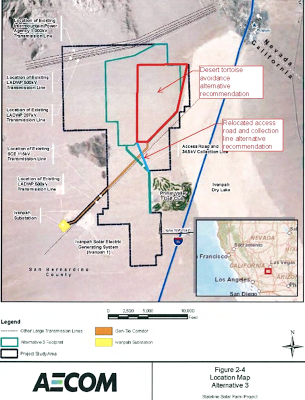"Green" Extractivism and the Ivanpah Valley

The Ivanpah Valley is now emblematic of the market's power not only to displace nature for the sake of materialism at an impressive scale, but also to limit the environmental movement's willingness to pursue sustainability. First Solar continues to bulldoze intact habitat in the Ivanpah Valley to make way for over 6 square miles of solar panels at its Stateline and Silver State South projects. The impact of the construction has been sobering, with desert tortoises, kit fox, LeConte's thrasher, ancient yucca, and countless other wildlife displaced or destroyed for a clean technology that can easily be installed on rooftops, over parking lots, and on already-disturbed lands. These First Solar projects join two other solar projects - including the BrightSource Ivanpah Solar project - and have turned a mostly wild landscape into one that is starkly dominated by human development. Ivanpah proves that elements of our clean energy transition are dangerously compatible...







